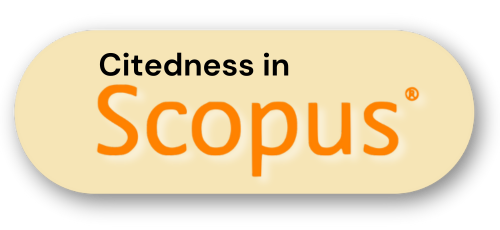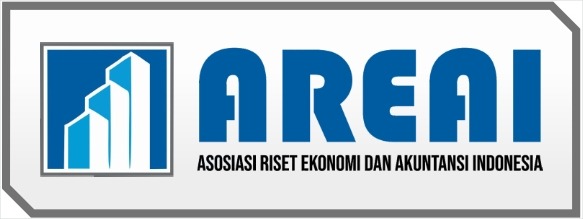Analysis of the Effectiveness of the Voluntary Disclosure Program on Taxpayer Compliance at the Koja Pratama Tax Service Office in 2022
DOI:
https://doi.org/10.61194/ijat.v1i1.6Keywords:
Effectiveness, Voluntary Disclosure Program, Taxpayer ComplianceAbstract
This research is motivated by taxpayers' lack of awareness in fulfilling their tax obligations and disclosing their assets in annual tax returns, resulting in decreased compliance levels and tax ratio in Indonesia. The government has implemented a Voluntary Disclosure Program to encourage taxpayers to fulfill their obligations and disclose their assets voluntarily, with the expectation of improving compliance. This study aims to analyze the effectiveness of the program's implementation at the Koja Pratama Tax Service Office in 2022, including identifying inhibiting factors and efforts made to implement the program. Qualitative research methods were used, with primary data obtained from informant interviews and secondary data from interviews, observations, and documentation. The results indicate that while concrete targets have been achieved, they have not significantly impacted taxpayer compliance due to suboptimal target setting and realization. Obstacles faced in implementing the program include limited knowledge of potential participants due to an online mechanism and limited field access for employees. Efforts are being made to maximize data on potential taxpayers to increase participation rates.
References
Alvarez, S., Bampasidou, M., & Solís, D. (2019). Evaluating the Impact of Employing Local Tax Collectors to Improve State-Level Licensing Program Outcomes in Florida. Evaluation Review, 43(1–2), 77–107. https://doi.org/10.1177/0193841X19865353
Boyd, B. W. E., & Ashley, P. (2006). Quantitative and qualitative approaches to research in environmental management. Australasian Journal of Environmental Management, 13(2), 70–78. https://doi.org/10.1080/14486563.2006.10648674
Bräutigam, R., Spengel, C., & Stutzenberger, K. (2019). The development of corporate tax systems in the European union from 1998 to 2017: Qualitative and quantitative analysis. Intertax, 47(6–7), 536–562. https://www.scopus.com/inward/record.uri?eid=2-s2.0-85066942965&partnerID=40&md5=6b631fc9588ece9d0bea8dc2918dc189
Brunner, J. K., Eckerstorfer, P., & Pech, S. (2013). Optimal taxes on wealth and consumption in the presence of tax evasion. Journal of Economics/ Zeitschrift Fur Nationalokonomie, 110(2), 107–124. https://doi.org/10.1007/s00712-012-0314-4
Bynner, C., McBride, M., & Weakley, S. (2022). The COVID-19 pandemic: the essential role of the voluntary sector in emergency response and resilience planning. Voluntary Sector Review, 13(1), 167–175. https://doi.org/10.1332/204080521X16220328777643
Christl, M., Köppl–Turyna, M., Lorenz, H., & Kucsera, D. (2020). Redistribution within the tax-benefits system in Austria. Economic Analysis and Policy, 68, 250–264. https://doi.org/10.1016/j.eap.2020.09.011
Cnossen, S. (2018). Corporation taxes in the European Union: Slowly moving toward comprehensive business income taxation? International Tax and Public Finance, 25(3), 808–840. https://doi.org/10.1007/s10797-017-9471-2
Dawkins, C. (2013). The spatial pattern of low income housing tax credit properties: Implications for fair housing and poverty deconcentration policies. Journal of the American Planning Association, 79(3), 222–234. https://doi.org/10.1080/01944363.2014.895635
Drucker, J., Funderburg, R., Merriman, D., & Weber, R. (2020). Do local governments use business tax incentives to compensate for high business property taxes? Regional Science and Urban Economics, 81. https://doi.org/10.1016/j.regsciurbeco.2019.103498
Dzhurbina, E. M., & Fateev, D. I. (2016). Regional heterogeneity of income tax in the russian federation: The experience of the quantitative analysis and regulatory issues. International Review of Management and Marketing, 6(5), 143–148. https://www.scopus.com/inward/record.uri?eid=2-s2.0-84982915286&partnerID=40&md5=441317eb95484f82f6b6c9cba35d7e84
González Canché, M. S. (2022). Post-purchase Federal Financial Aid: How (in)Effective is the IRS’s Student Loan Interest Deduction (SLID) in Reaching Lower-Income Taxpayers and Students? Research in Higher Education, 63(6), 933–986. https://doi.org/10.1007/s11162-021-09672-6
Jara, H. X., Deza Delgado, M. C., Oliva, N., & Torres, J. (2023). Financial disincentives to formal employment and tax-benefit systems in Latin America. International Tax and Public Finance, 30(1), 69–113. https://doi.org/10.1007/s10797-021-09724-8
Liu, H., Xia, Q., & Xu, J. (2011). Notice of Retraction: Taxpayer compliance in China: A prospect theory analysis. 2011 2nd International Conference on Artificial Intelligence, Management Science and Electronic Commerce, AIMSEC 2011 - Proceedings, 7292–7297. https://doi.org/10.1109/AIMSEC.2011.6009750
Maharani, F. S., & Baroroh, N. (2020). The Effect of Leverage, Executive Characters, and Institutional Ownership to Tax Avoidance with Political Connection as Moderation. Accounting Analysis Journal, 8(2), 81–87.
Mashuri, A. A., & Ermaya, H. N. (2019). The Effect of Tax Aggressiveness and Media Exposure on Corporate Social Responsibility Disclosure with Profitability as Moderated Variables. Advances in Economics, Business, and Management Research, 124.
Murray, M. N. (1997). Would tax evasion and tax avoidance undermine a national retail sales tax? National Tax Journal, 50(1), 167–182. https://www.scopus.com/inward/record.uri?eid=2-s2.0-0007244986&partnerID=40&md5=1376e7f45e1ae5b4ecadb3f2d19f977f
Ravenda, D., Valencia-Silva, M. M., Argiles-Bosch, J. M., & García-Blandón, J. (2020). Measuring labour tax avoidance and undeclared work: evidence from tax-avoidant offending firms. Journal of Applied Accounting Research, 21(3), 477–496. https://doi.org/10.1108/JAAR-01-2019-0016
Revesz, J. (2020). A Model of the Optimal Tax Mix Including Capital Taxation. Atlantic Economic Journal, 48(3), 387–402. https://doi.org/10.1007/s11293-020-09676-0
Santis, S., Grossi, G., & Bisogno, M. (2019). Drivers for the voluntary adoption of consolidated financial statements in local governments. Public Money and Management, 39(8), 534–543. https://doi.org/10.1080/09540962.2019.1618072
Sørensen, P. B. (1994). From the global income tax to the dual income tax: Recent tax reforms in the Nordic countries. International Tax and Public Finance, 1(1), 57–79. https://doi.org/10.1007/BF00874089
Downloads
Published
How to Cite
Issue
Section
License
Copyright (c) 2023 Adi Sumarta Haysu

This work is licensed under a Creative Commons Attribution 4.0 International License.






